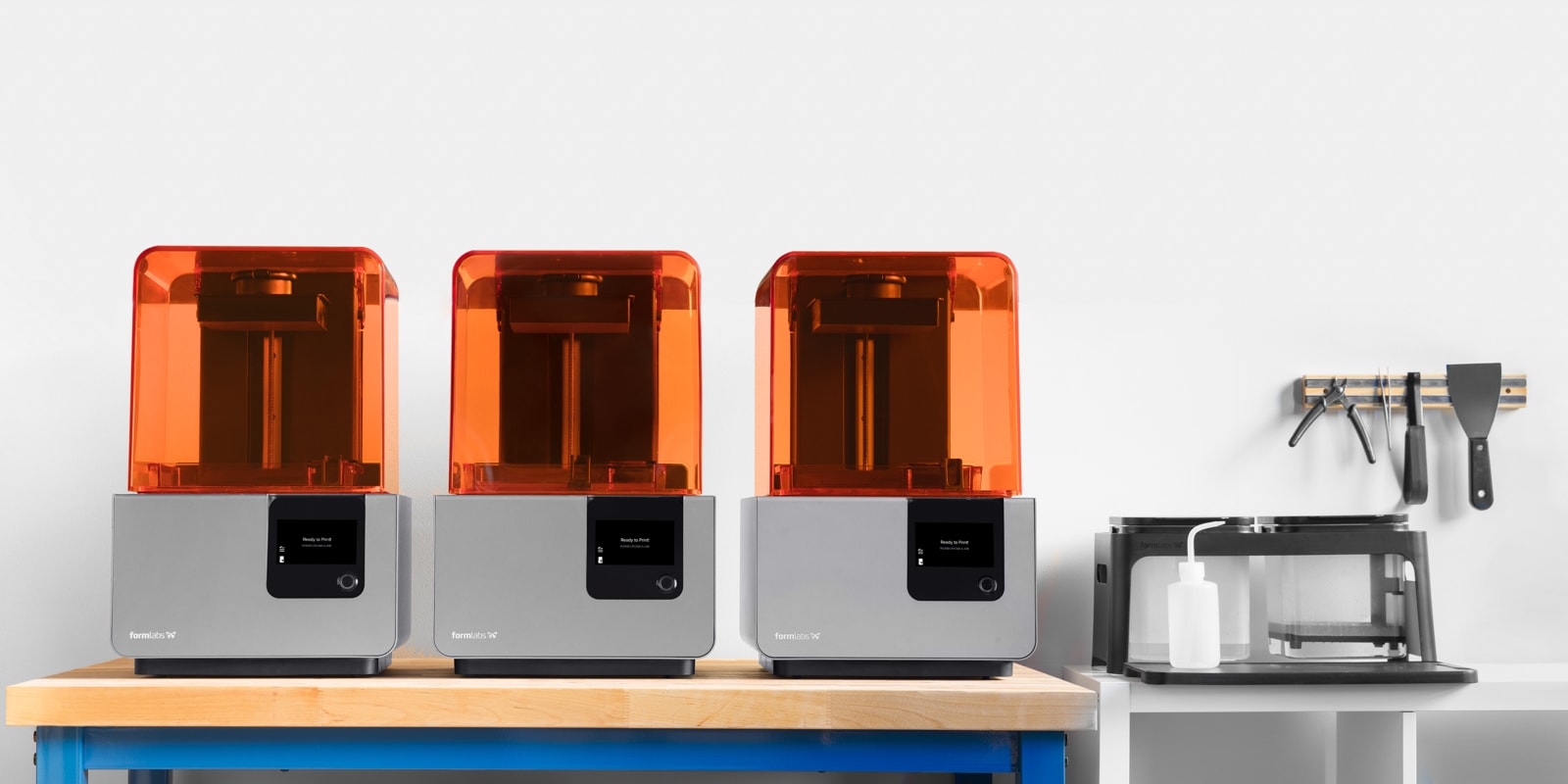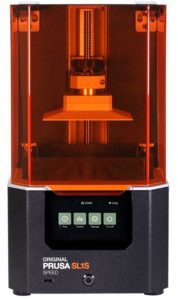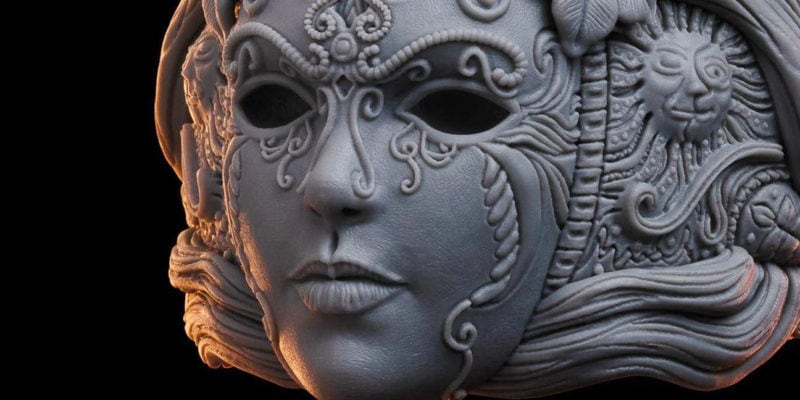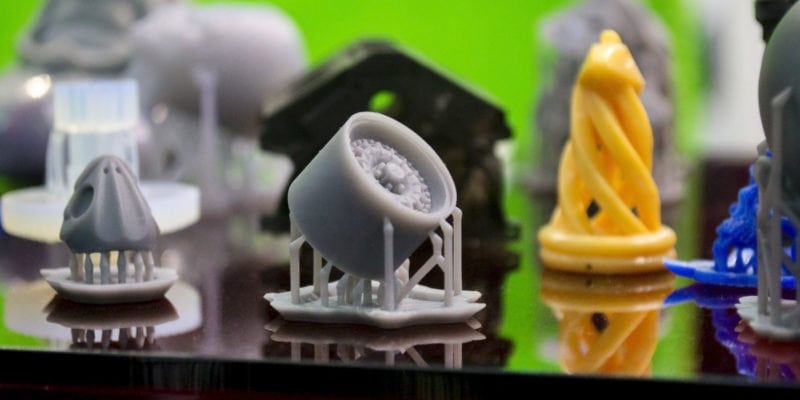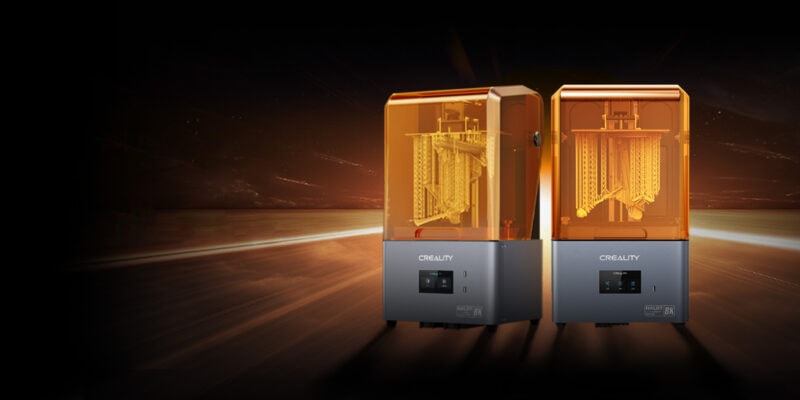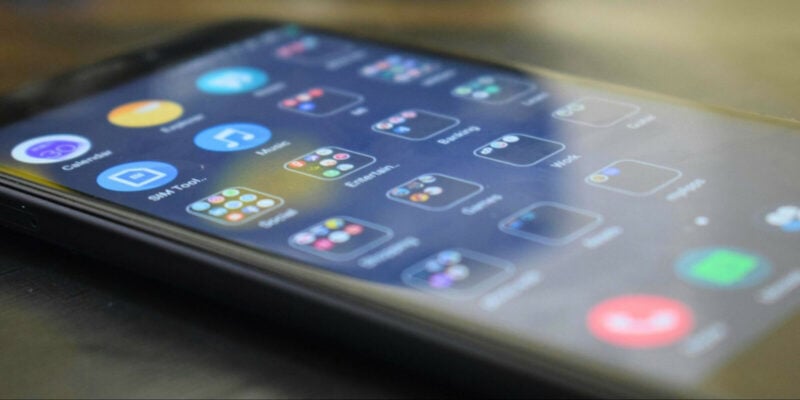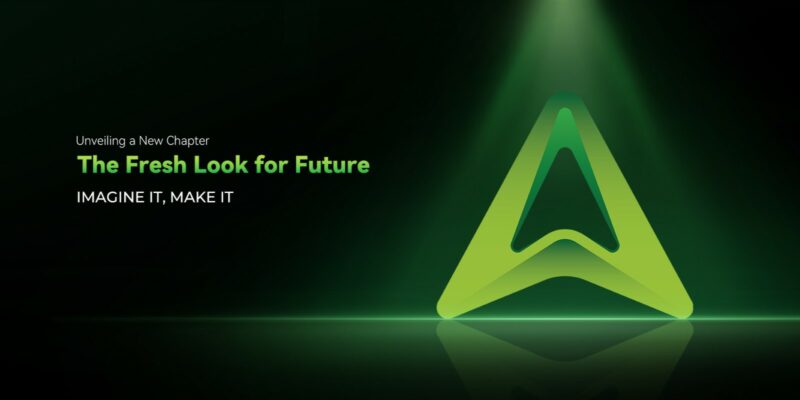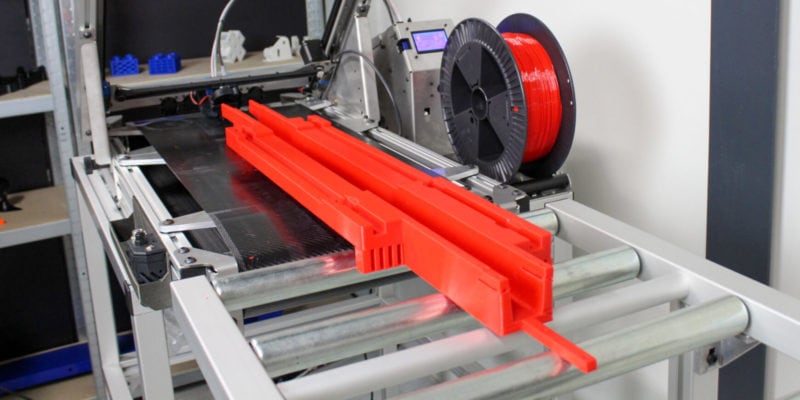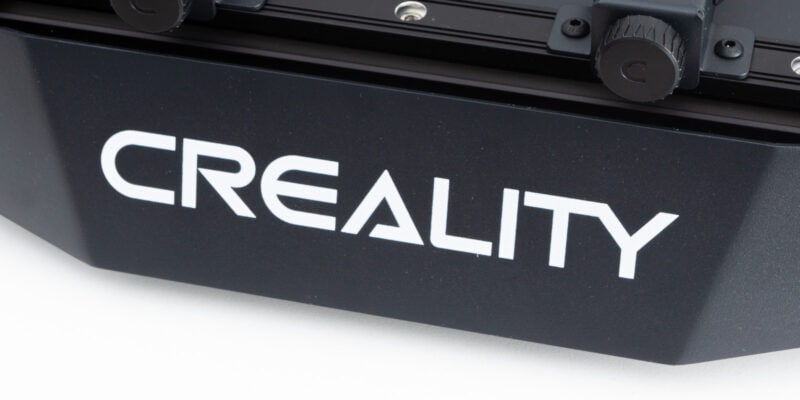A few years ago, the thought of having a resin 3D printer in your homes or offices might have seemed absurd. But fast forward to 2024, and we have plenty of options that cater to a wide variety of audiences. From $200 to upwards of $2000, there is a 3D resin printer suitable for everyone.
For example, the recently released Elegoo Mars 3 caters to many users owing to its neat features and affordable price tag. This is partly why it is the pick for our overall best resin 3D printer in this list.
The other printers in our line-up each suit a specific niche of resin printer users. Read on to find out which are the best resin 3D printers available right now and choose the best option for your needs.
| Resin 3D Printer | Build Volume | Resolution (μm) | Price (~) | Best Offer |
|---|---|---|---|---|
| Elegoo Mars 3 | 143 x 90 x 175 mm | XY: 35 Z: 10 | $260 | |
| Prusa SL1S Speed | 127 x 80 x 150 mm | XY: 49 Z: 10 | $1999 | |
| Anycubic Photon Mono | 130 x 80 x 165 mm | XY: 51 Z: 10 | $189 | |
| Formlabs Form 3+ | 145 x 145 x 185 mm | XY: 25 Z: 25 | $3499 | |
| Phrozen Sonic Mini 8K | 165 x 72 x 180 mm | XY: 22 Z: 10 | $599 | |
| Peopoly Phenom L | 346 x 194 x 400 mm | XY: 90 Z: N/A | $2999 | |
| Phrozen Sonic Mini 4K | 135 x 75 x 130 mm | XY: 35 Z: 10 | $349 | |
| Anycubic Photon Mono X 6K | 197 x 122 x 245 mm | XY: 34 Z: 10 | $659 | |
| Elegoo Saturn | 192 x 120 x 200 mm | XY: 50 Z: 10 | $380 | |
| Elegoo Mercury Plus | 125 x 85 x 160 mm | N/A | $114 |
Best Resin 3D Printers in 2024
The Elegoo Mars 3 is the latest resin 3D printer from Elegoo and the first in the Mars series with a monochrome 4K LCD. It is a significant improvement over the previous generations of Mars 3D printers, specifically its direct predecessor, the Elegoo Mars 2.
The Mars 3 sports a unique design reminiscent of the 90s iMacs. The improved design comes with a better heat dissipation system for the UV light, improved release (FEP) film, and an upgraded UV array. Its XY resolution is now 35 μm, instead of the previous gen’s 50 μm.
At its release, the Mars 3 only supported Chitubox Slicer, leading to a controversy with resin 3D printer users. But, following the backlash, Elegoo has released an SDK that allows for the use of the popular Lychee slicer with the Mars 3. This means that you can take advantage of Lychee’s features as well, such as its superior support material generation.
Included with the purchase of the Mars 3 is a year-long license for the Chitubox Pro slicer, valued at $169. So regardless of what your slicing needs are, you have plenty of options.
With its 143 x 90 x 175 mm build volume, the Elegoo Mars 3 lets you print 37% bigger objects than you could with the Mars 2. This is an impressive feat, given that this 3D resin printer still has a compact footprint.
The improved set of features and better print quality under $400 make the Elegoo Mars 3 in our opinion the overall best resin 3D printer you can buy right now. If you’re a beginner or a seasoned hobbyist, the Mars 3 is likely to fulfill your needs.
Standout Features
- 4K mono LCD screen
- Increased print volume
- Resin film v2.0
Technical Details |
|
|---|---|
| Build Volume | 143 x 90 x 175 mm |
| XY Resolution | 35 μm (4098 x 2560 pixels) |
| Bed-Leveling | Manual |
| Materials | 405 nm resin |
| Recommended Slicer | ChiTuBox (Pro) |
| Connectivity | USB |
What We Like
- Reproduces finer details easily
- 1 year of Chitubox Pro subscription
- Easy to set up and use
Could Be Better
- Lacks Wi-Fi
- No air filtration
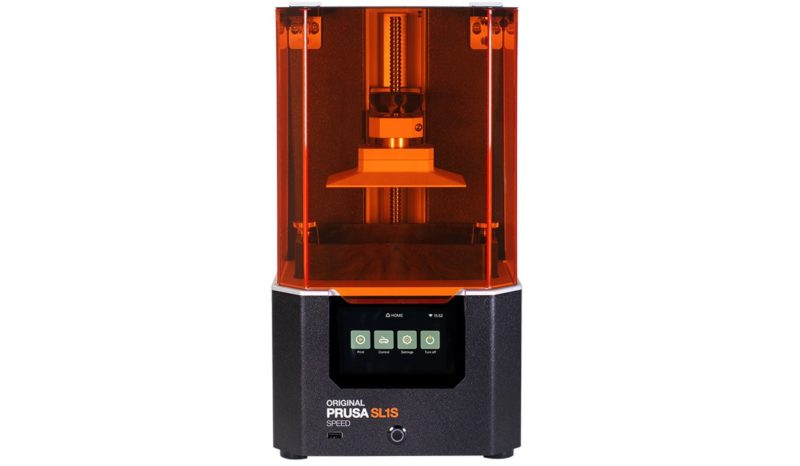
The Prusa SL1S speed resin 3D printer was released to upgrade the original Prusa SL1. The SL1S dramatically improves printing speeds, build quality, and overall print quality.
It features a 2K monochrome LCD screen that cures resin layers within 1.4 seconds. The body of the SL1S is entirely made up of aluminum to provide rigidity to the machine and reduce any vibrations. The unique tilting vat mechanism in the SL1S, too, according to Prusa, is 2X faster than the conventional bed lifting and prevents layer shifts as well.
The SL1S comes with Wi-Fi and LAN for improved connectivity and a rear-mounted carbon filter that reduces the odors and fumes of 3D printer resin. This is an essential feature if you plan on resin 3D printing day in day out.
When you combine the SL1S with Prusa’s CW1S washing and curing station, you have an almost unbeatable resin 3D printing solution.
At the price point of $2000, the Prusa SL1S is not for everyone. However, if time is money for you and you want a 3D printer that prints reliably and delivers great-looking 3D prints every time, the Prusa SL1S is the best addition to your resin printing workflow.
Standout Features
- Vat tilting mechanism
- Wireless 3D printing
- Swappable resin tank
Technical Details |
|
|---|---|
| Build Volume | 127 x 80 x 150 mm |
| XY Resolution | 49 μm (2560 x 1620 pixels) |
| Bed-Leveling | Automatic |
| Materials | 405 nm resin |
| Recommended Slicer | PrusaSlicer |
| Connectivity | USB, WiFi, LAN |
What We Like
- Fast curing times
- Robust build quality
- Open-source design
Could Be Better
- Small build volume
- Pricy
The Anycubic Photon Mono is the least expensive monochrome resin 3D printer in Anycubic’s lineup. The highlighting factor of the Photon Mono, other than its low price, is its 2K monochrome LCD screen.
The 6” 2K monochrome LCD lets it 3D print up to 3x faster than the original Photon printer, and Anycubic claims that the new screen lasts up to 4x longer when compared to an RGB screen. Its other features include a quick to replace FEP film, top cover detection, and a sturdy Z-axis that provides stability while printing.
Overall, the Photon Mono is an excellent package in many aspects and delivers a great print quality considering it’s a sub $200 resin 3D printer. It is definitely not the most polished resin 3D printer, but for someone who’s on a budget or looking to get into resin printing for cheap, the Photon Mono certainly gives you a great bang for your buck.
Standout Features
- Monochrome display
- Top cover detection
- Quick FEP replacement
Technical Details |
|
|---|---|
| Build Volume | 130 x 80 x 165 mm |
| XY Resolution | 51 μm (2560 x 1680 pixels) |
| Bed-Leveling | Manual |
| Materials | 405 nm UV resin |
| Recommended Slicer | Anycubic Photon Workshop |
| Connectivity | USB |
What We Like
- Fast printing speeds
- Long-lasting LCD
- Cheap
Could Be Better
- 2K display
- Plastic vat
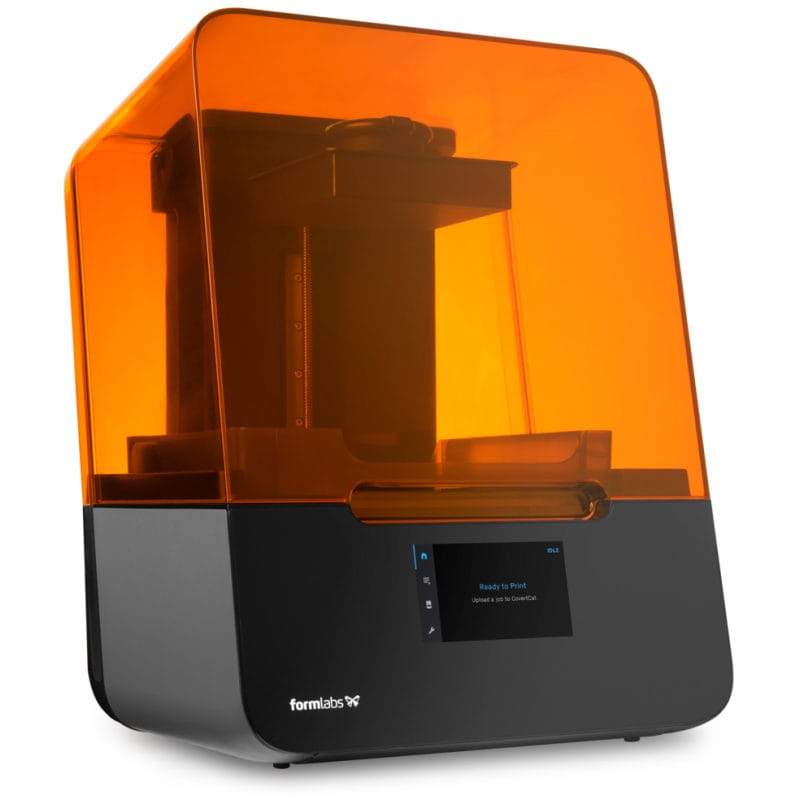
The Formlabs Form 3+ is the newest addition in the Form 3 lineup from Formlabs. It was released at CES 2022 and comes with subtle improvements over the previous Form 3 to enhance the printing experience.
On the hardware side, Form 3+ now has an improved Light Processing Unit (LPU) that enables it to print up to 20-40% faster than the previous gen. Formlabs have optimized the first layer performance on Form 3+, resulting in a saving of 5-15 minutes in the first few layers of the model.
You still get support for 30+ materials that are finely tuned to print perfectly on Form 3+. This resin 3D printer also features a new quick-release build platform and optimized light-touch supports for extra ease of use.
The Form 3+ is meant to be an industrial resin 3D printer, and it excels at being one. It has a smooth workflow, excellent company support, and delivers excellent printing quality every time.
If you have the money to spend and are looking for a reliable high-end resin 3D printer, Form 3+ is the machine for you. Do keep in mind that unlike with the Prusa SL1S, with the Form 3+ you are locked into using Formlabs’ proprietary resins.
Standout Features
- Quick-release print bed
- Improved LPU
- Adaptive layer tech
Technical Details |
|
|---|---|
| Build Volume | 145 x 145 x 185 mm |
| XY Resolution | 25 μm |
| Bed-Leveling | Automatic |
| Materials | Formlabs resin cartridges |
| Recommended Slicer | PreForm |
| Connectivity | WiFi, Ethernet, USB |
What We Like
- Faster printing speeds
- Excellent printing quality
- Improved pre-heating time
Could Be Better
- Only works w/ Formlabs resin
- Expensive

The Phrozen Sonic Mini 8K is one of the few 8K resin 3D printers you can buy right now. The unique thing about the Sonic Mini 8K is its high resolution of 22 μm in the XY plane, unheard of in the consumer resin 3D printers space.
In comparison, most resin 3D printers have a standard XY resolution of 50 μm. The Mini 8K achieves this exceptional detail thanks to its 8K, 7.1” mono LCD screen. The high resolution comes in handy when printing extremely detailed and small pieces with intricate designs.
Using a linear projection LED module, the Mini 8K enhances the light uniformity. This results in sharper-looking 3D prints. The use of a frosted build platform and dual linear rails further enhance the print stability and reduce the number of unsuccessful 3D prints.
The Sonic Mini 8K is the first in what will probably be a long line of 8K resin 3D printers. If print resolution and quality are of utmost importance to you, you are unlikely to be disappointed with it.
Standout Features
- 22 μm high-res display
- Linear projection LED
- Laser-etched build plate
Technical Details |
|
|---|---|
| Build Volume | 165 x 72 x 180 mm |
| XY Resolution | 22 μm (7500 x 3240 pixels) |
| Bed-Leveling | Manual |
| Materials | 405 nm UV resin |
| Recommended Slicer | ChiTuBox |
| Connectivity | USB |
What We Like
- Extremely detailed 3D prints
- Excellent build quality
- Fits easily on a desktop
Could Be Better
- Small build volume
- Lacks connectivity options
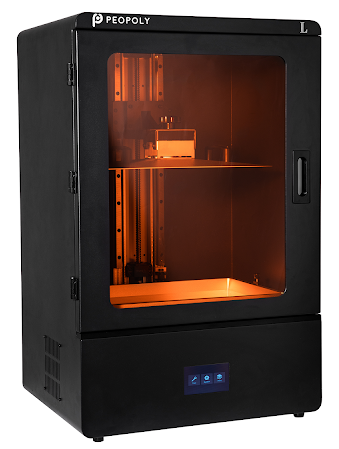
The Peopoly Phenom L is an exception in the conventionally small-sized resin 3D printer space. With a build volume that’s enough to 3D print an entire helmet in one go, it’s sufficient to say that the Phenom L is one of the largest consumer-level resin 3D printers.
The Phenom L’s total build volume is 345.6 x 194.4 x 400 mm. To support such a massive print volume, Peopoly has equipped it with a 4K LCD. Because of its large build platform this only gives an XY resolution of 90 μm. This may seem like a significant drop from 50 μm, but the difference is hardly noticeable in the real world.
Peopoly has designed the Phenom L to be modular and easily upgradeable in the future. It ensures that you have the latest parts updated with the current standards. If you print a lot of large-sized props, end-use components or run small batches of resin 3D printed pieces, the Phenom L is likely to be the best resin 3D printer for you.
Standout Features
- Massive print area
- Modular design
- Dual rail Z-axis
Technical Details |
|
|---|---|
| Build Volume | 346 x 194 x 400 mm |
| XY Resolution | 90 μm (3840 x 2160 pixels) |
| Bed-Leveling | Manual |
| Materials | 405 nm resin |
| Recommended Slicer | ChiTuBox |
| Connectivity | USB, Ethernet |
What We Like
- Suitable for batch productions
- Relatively affordable
- Can use third party resins
Could Be Better
- Slightly lower resolution
- Cumbersome handling
The Phrozen Sonic Mini 4K brings a 4K monochrome LCD screen to the Phrozen Sonic family, giving the 3D printer an edge over its predecessor- the Sonic Mini.
The 6.1” 4K LCD mono display on the Mini 4K has a pixel density of 772 PPI, resulting in an impressive 35 μm high resolution in the XY plane. It translates to sharper intricate models and a 3D printer that easily reproduces fine details. Its metal resin vat and slightly inclined build plate top to drip off the resin are some of the other welcome changes in the Mini 4K.
It supports Chitubox, Phrozen’s version of Formware, as well as Lychee Slicer. There are finely tuned default profiles available for the Mini 4K in all these slicers, making it easy for beginners to begin resin printing right away.
The 4K quality and low price point, combined with the ease of use of the Mini 4K, make it a good choice for beginners and amateur users to dip their toes in resin 3D printing.
Standout Features
- 4K monochrome LCD
- Compact build
- Multi-resin compatibility
Technical Details |
|
|---|---|
| Build Volume | 135 x 75 x 130 mm |
| XY Resolution | 35 μm (3840 x 2160 pixels) |
| Bed-Leveling | Manual |
| Materials | 405 nm resin |
| Recommended Slicer | ChiTuBox |
| Connectivity | USB |
What We Like
- Easy to set up and use
- Fits anywhere easily
- Highly detailed 3D prints
Could Be Better
- Lacks connectivity options
The Photon Mono X 6K is the highest resolution resin 3D printer from Anycubic. It packs in an impressive 6K screen giving the 3D printer an excellent 34 μm XY resolution.
Its 9.25” 6K mono LCD screen also offers a 350:1 high contrast ratio. This translates to highly detailed resin 3D prints that have sharper corners and edges. The newer screen also has a higher light transmittance rate at 6%, resulting in faster curing times and increased printing speeds.
This resin printer comes with an anti-scratch protective layer on the FEP film for increased protection and an improved UV light array. The Mono X 6K is now also compatible with a wide variety of resins thanks to its optimized light power regulation.
The Mono X 6K falls in a sweet spot between 4K and 8K resin 3D printers and offers great value at its price. The improved resolution and large build volume deliver excellent printing quality and make it a good choice for both hobbyists and semi-professional resin 3D printer users.
Standout Features
- 6K monochrome LCD
- Laser-etched build plate
- Large build volume
Technical Details |
|
|---|---|
| Build Volume | 197 x 122 x 245 mm |
| XY Resolution | 34 μm (5760 x 3600 pixels) |
| Bed-Leveling | Manual |
| Materials | 405 nm resin |
| Recommended Slicer | Anycubic Photon Workshop |
| Connectivity | Wi-Fi, USB |
What We Like
- Sharper prints with clear edges
- Faster printing times
- Universal material compatibility
Could Be Better
- Limited slicer compatibility
The Elegoo Saturn is a large format 4K resin 3D printer from Elegoo aimed towards users who want an affordable large print volume resin 3D printer. With its 192 x 120 x 200 mm build volume and sub-$500 price, the Saturn checks both those boxes.
It comes an 8.9” 4K mono LCD which outputs a 50 μm XY resolution and cures a single layer in just under 2 seconds. The Z-axis has a dual linear guideway for increased stability and smooth motion during the printing process. An aluminum resin vat and a metal body add to the Saturn’s long-term durability.
On the user experience side, the Elegoo Saturn has an ethernet port to send your 3D files over LAN. It also has full Chitubox Slicer support and is compatible with the Mercury Plus washing and curing station for easy post-processing.
The Elegoo Saturn’s large print bed and high-res screen are its main highlights. It is an excellent fit if you’re on a budget and want a resin 3D printer that can print large-sized objects in one go, without having to sacrifice too much detail on small-sized models.
Standout Features
- 4K monochrome LCD
- Sandblasted print bed
- Dual linear rails guideway
Technical Details |
|
|---|---|
| Build Volume | 192 x 120 x 200 mm |
| XY Resolution | 50 μm (3840 x 2400 pixels) |
| Bed-Leveling | Manual |
| Materials | 405 nm resin |
| Recommended Slicer | Chitubox |
| Connectivity | USB, Ethernet |
What We Like
- Easy to use
- Faster printing times
- Good community support
Could Be Better
- Lacks air filtration
Resin 3D prints require post-processing which involves washing and curing them. The Elegoo Mercury Plus is a dedicated post-processing unit for resin printers to wash, clean, and cure your resin models.
The Mercury Plus is a 2 in 1 solution that combines washing and curing in a single unit. It comes with a washing bucket to wash your models. You can clean the models in the bucket using the cleaning basket or directly suspend the model with the build platform.
To aid in the curing process, the Mercury Plus comes with a rotating turntable which ensures that the UV lights evenly cure all the areas of your resin model. As a safety feature, Elegoo has included a top-lid sensor that automatically switches off the UV light if the lid is opened.
The Mercury Plus is cheap, easy to use, saves space, and removes the biggest hassles associated with post-processing resin 3D printers. It is equally suited for beginners, hobbyists, and seasoned professionals.
Standout Features
- 2-in-1 design
- Flexible washing mode
- Intelligent curing control
Technical Details |
|
|---|---|
| UV Light | 385nm+405nm (8+8) |
| Time Setting | 0-30 mins |
| Machine Size | 200 x 200 x 352 mm |
| Maximum Wash Volume | 125 x 85 x 160 mm |
| Maximum Curing Size | Ø 140 x 165mm |
What We Like
- High resin printer compatibility
- Eases post-processing
- Cheap
Could Be Better
- Limited print volume
- Unsuitable with water-washable resins
What to Consider When Buying a Resin 3D Printer?
Intended Use
Before you plan to buy a resin 3D printer, you should be clear about its intended use case. What kind of models are you planning on resin printing? Where do you plan to use the printer? Is it for professional use or hobby purposes?
To illustrate with an example, let’s consider that you have prior experience in resin 3D printing and would now like to buy a feature-rich resin printer for hobby purposes on a budget.
The most appropriate printer for you would be the Elegoo Mars 3. Its high resolution, excellent build quality, and one-year free Chitubox Pro subscription make it an excellent overall choice for hobbyists on a budget.
Similarly, suppose you require large resin 3D prints. In that case, a better choice would be the Peopoly Phenom L.
If you want a resin 3D printer that is guaranteed to deliver high quality 3D prints every time with a company that offers high quality support when you need it, the clear option is the Formlabs Form 3+. Be prepared to pay for it, however.
If you run a small business and the Form 3+ is outside of your budget, you are probably best off investing in the Prusa SL1S instead.
The above were just a few examples of the many scenarios out there, but the point is that the best resin 3D printer highly depends on your specific needs.
For more detailed advice on how to make your selection, keep reading.
Build Volume
One of the main aspects of resin printers other than their resolution is their build volume. The build volume of your resin printer will dictate what size objects you can print on your 3D printer and ultimately determines its applications.
Large build volume 3D printers sound like the obvious choice, but they have a higher 3D printer cost, require more 3D printer resin at once, and are difficult to maintain. The benefit, however, is the larger printing area you get. You can 3D print a bigger batch size, larger objects, or your entire D&D army at once. If you think you’ll primarily be 3D printing such pieces, only then it makes sense to go for a bigger build volume.
Smaller build volume 3D printers are still equipped with high-res screens. Because of their smaller dimensions, this means a higher pixel density and more detailed 3D prints. The obvious caveat with these printers is their small size, and the printing area limits you to smaller models.
The Peopoly Phenom L and the Elegoo Saturn are the best resin 3D printers if you want a bigger build volume. The Phenom L is oriented more towards professionals who want large-sized objects and batch prints. At the same time, the Saturn is suitable for hobbyists looking for a bigger than average print area.
In smaller resin 3D printers, the Mars 3, Photon Mono, and the Sonic Mini 4K provide a decent printing volume at a reasonable cost.
SLA vs MSLA
Stereolithography (SLA) and Masked Stereolithography (MSLA) are two significant resin 3D printing techniques. SLA 3D printers use a laser beam as their UV light source, whereas MSLA 3D printers use an array of UV LEDs.
SLA 3D printers are known for their superior quality of 3D prints. The laser beam cures each point in the model’s cross-section individually, thus resulting in a print with excellent details and a superior surface quality.
An SLA 3D printed piece does not face the issue of voxels or staircase effect, which is seen in MSLA 3D printers. SLA 3D printers, however, are slow and are more expensive, thus their use for some use cases.
In MSLA 3D printers, an LCD screen is placed between the UV light and the resin vat. The LCD lets the light pass through specific display areas at once, allowing MSLA 3D printers to cure an entire resin layer at once.
MSLA 3D printers are more common in the consumer resin 3D printing market. They are easy to use, have great features, provide excellent print quality, and are more accessible and affordable than SLA 3D printers. If you’re looking to begin resin 3D printing and do not need the highest quality, MSLA 3D printers are the best choice for you.
Resolution
MSLA 3D printers are often classified based on their screen resolution. 2K, 4K, and 8K are the common LCD resolutions that you can find in these 3D printers. A higher resolution on the same size screen means that the pixels have a higher density, resulting in a higher XY print resolution.
This is why the XY resolution denotes the pixel size on the LCD. 3D printers like the Elegoo Mars 3 and the Sonic Mini 4K have a small screen with high resolutions, resulting in an XY resolution of 35 μm. The Sonic Mini 8K takes things one step further with 22 μm XY resolution.
In comparison, the Elegoo Saturn and the Peopoly Phenom L both have a 4K display. Yet the Saturn has a resolution of 50 μm while the Phenom L goes up to 92 μm. This is because they both have a bigger build volume and their 4K resolution is spread out over a larger LCD. The advantage of these resin 3D printers is that they let you print bigger objects, however.
You are unlikely to notice a massive difference between the various resolutions. But 3D models that are printed at higher resolutions do tend to be a bit sharper. This is why 4K/6K/8K resin printers are starting to become more popular. For more information on these, you can check out our dedicated buyer’s guide.

Mono vs RGB LCD
LCD screens used in MSLA resin 3D printers can be subdivided in Monochrome LCDs with a single color filter and RGB LCDs with three color filters. RGB LCDs were used in the earlier generations of resin 3D printers but have since been replaced with monochrome LCDs in the newer machines.
RGB displays transmit only 1% of their light in UV wavelenghts, so 3D printers with RGB screens require a higher exposure time for curing resin. On the other hand, the mono LCDs transmit up to 6% UV light, resulting in quicker resin layer curing times.
These mono LCDs also have a protective coating in their design, limiting the damage done to them by the UV rays. It results in a longer lifespan of the monochrome display, with some manufacturers rating their displays to work beyond 2000 hours of resin printing.
In all aspects, a mono LCD 3D printer is advantageous over the RGB screen, and it lets you print faster and saves on maintenance costs due to its longer lifespan. Except for the Phenom L, all the other resin 3D printers our list of best resin 3D printers feature a monochrome display.
Post Processing Requirements
Resin 3D prints are incomplete without post-processing, and you need to wash off the excess resin to get a clean piece. Then, you need to cure them to ensure that the piece has good mechanical properties.
A washing and cure station makes this task easier and mess-free. The Elegoo Mercury station is one of the budget options that provides you with a complete post-processing setup. With it, you can clean and cure prints in a single machine. However, you are limited by its size. It only lets you post-process 3D prints of small-to-medium sizes.
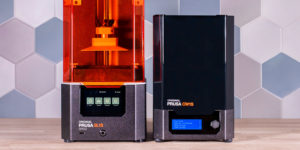
If you decide on using large 3D printers such as the Saturn and the Phenom L, you need to get a more extensive post-processing setup which is expensive and requires more consumables. Alternatively, you can skip these setups and use a DIY solution instead. But these do tend to be messy and do not give optimal results.
How Much is a Resin Printer?
3D resin printers vary wildly in price depending on their features. A beginner resin 3D printer with essential features like the Anycubic Photon Mono does not even have a cost of $200, while the best resin 3D printers, like the Formlabs Form 3+, can go for upwards of $3000.
What Makes a Good Resin 3D Printer?
A good resin 3D printer has a high ease of use, wide compatibility with materials, and a low cost per print. Excellent printing quality is one of the key criteria as well.
What’s the Best Resin for 3D Printing?
The best resin for 3D printing depends on your needs, but Siraiya Tech resins and Prusament resin are widely compatible with many resin 3D printers and are often praised for their excellent printing quality.

How Expensive is a Resin for 3D Printing?
Standard 3D printing resin is the cheapest, with the most affordable one being Anycubic’s grey resin for just $40.00 per liter. The rest of the resins vary in price depending upon the manufacturer and can go as high as $300 per liter of resin.
Conclusion
The Elegoo Mars 3 rightly sits at the top of our list for the overall best resin 3D printer. It is affordable, delivers excellent print quality, has a decent build volume, is easy to use, and has broad material compatibility. It makes for a great first resin 3D printer or even the second one.
After the Mars 3, the Prusa SL1S Speed and the Elegoo Saturn are excellent options for both professionals and hobbyists alike. Indeed, the Prusa is expensive, but it is well worth the money if you are a serious user. On the other hand, the Saturn is the best resin 3D printer in the mid-range budget, offering the ability for large resin prints with good quality.
Resin printers are still new and have a lot to offer yet. The higher quality and the superior printing experience make them the best suit for anyone looking to upgrade from FDM machines.
Let us know your thoughts on the list, and if you have anything else to add, feel free to comment below.
